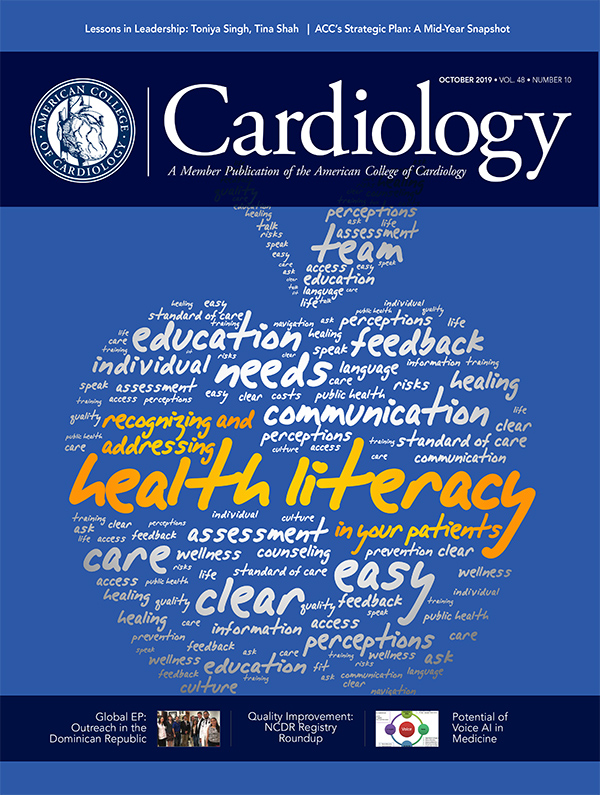Is There a Greater Role for CCTA In Assessing Risk in Patients With Stable Chest Pain?

When it comes to early detection of potentially obstructive coronary artery disease in patients with stable chest pain, marked advances in noninvasive imaging have led to increased accuracy and novel mechanistic insights. The downside, however, is often costs and the potential for unnecessary invasive tests.
So how can we use imaging to assess risk and guide management in a safe and cost-effective manner? A recent ACC Summit brought together a group of stakeholders spanning cardiology, radiology, industry, government and payers for a discussion on the latest science, forces for change and obstacles to change, with a specific focus on the role coronary computed tomography angiography (CCTA) imaging can play with this patient population.
A number of clinical trials, including SCOT-HEART, PROMISE, CRESCENT and CONSERVE, have added to evidence in support of a "CCTA first" approach to diagnosing the incidence of myocardial infarction in patients with low- to intermediate-risk, according to Koen Nieman, MD, PhD, who walked "Technological Advances in CCTA Summit" participants through the latest science.
He noted the benefits of CCTA as a "gatekeeper" to additional testing and cautioned that other societies like the European Society of Cardiology are showing a preference for CCTA first and "we need to catch up."
Udo Hoffmann, MD, MPH, who presented on the current evidence surrounding noninvasive fractional flow reserve CT (FFR-CT), agreed; highlighting that noninvasive imaging testing in the U.S. costs $15 billion annually, with the majority of tests being SPECT (65 percent) or stress echocardiography (30 percent). CCTA could improve efficiency for referral and revascularization and save costs, he said. Leslee J. Shaw, PhD, FACC, added that while SPECT dominates, CCTA is cheaper.
According to Christina Farrow of National Health Service (NHS) England and NHS Improvement, the U.S. can learn from CCTA use in the UK. She highlighted the importance of peer-to-peer networking and the value in early adopters talking to others and sharing best practices and challenges.
A team of innovators/implementors are needed to support sites and make change, she said. She also flagged the importance of staggered adoption to ensure proper training and the need to remove "perverse incentives" related to payment and/or specific specialties that are difficult to get around.
Ron Blankstein, MD, FACC, president of the Society of Cardiovascular CT, and Jaime Murillo, MD, FACC, national senior director of cardiology at UnitedHealthcare, recognize the benefits to payers, providers and patients of a CCTA first approach in the U.S., but the devil is in the details.
Among the benefits, said Blankstein, is that CCTA can accurately detect a wide spectrum of coronary artery disease early, thus reducing unnecessary and/or multiple tests. Other advantages, according to Murillo: improved patient satisfaction, decreased co-pays and improved outcomes.
However, Pamela S. Noack, PhD, MBA, Cathleen Biga, MSN, RN, FACC, and many participants noted some of the current constraints, including the need for more people to read CTs if there are more of them, as well as the lack of financial reasons for hospitals to perform CCTA given the costs.
CCTA may get lost in the hospital setting, said Noack, as many hospitals don't have detailed cost accounting and may not wish to provide scanner time for less complex cases. Meanwhile, prior authorization for CCTA and FFR-CT in physician offices is challenging, especially with many insurers requiring separate referral for FFR-CT.
"We're all in this together," said Murillo. "So what do we do?"
According to Noack, one answer may be to focus on bundled payments experiments that are preventive in nature. Current bundle programs focus more on acute case vs. preventive care, she said. Biga agreed, noting the need to change the compensation model.
She also added the importance of a team approach, specific action plans, appropriate training and advocacy. Other speakers and participants highlighted the importance of appropriate use criteria in helping to guide clinical decision making and need to remove prior authorization requirements. "What about a CCTA-guided pathway," asked Shaw.
Coming out of the Summit, stakeholders are working together to develop a detailed document highlighting a roadmap for the future. Some options for consideration, according to ACC CEO Tim Attebery, DSc, MBA, FACHE, as he summed up the discussion points, would be to:
- Research and develop better risk and pretest probability stratification for CCTA
- Leverage technology to track data and address variations in quality
- Close the gap in available qualified readers with additional training programs and requirements
- Lower or eliminate prior authorization barriers
- Work with stakeholders and payers to change the payment category for CCTA, as well as consider alternative payment models
Clinical Topics: Cardiovascular Care Team, Invasive Cardiovascular Angiography and Intervention, Noninvasive Imaging, Atherosclerotic Disease (CAD/PAD), Interventions and Coronary Artery Disease, Interventions and Imaging, Angiography, Computed Tomography, Echocardiography/Ultrasound, Nuclear Imaging
Keywords: ACC Publications, Cardiology Magazine, Health Policy, Coronary Artery Disease, Echocardiography, Stress, Insurance Carriers, Physicians' Offices, Patient Satisfaction, Angiography, Motivation, Tomography, Emission-Computed, Single-Photon, Chest Pain, Myocardial Infarction, Probability, Incidence, Government, Referral and Consultation, National Health Programs

